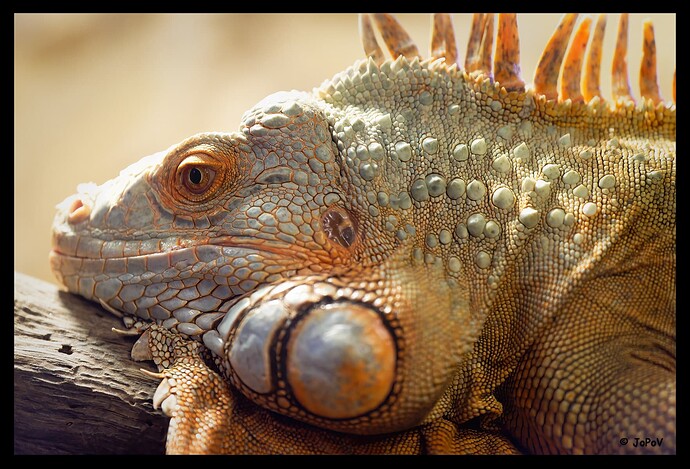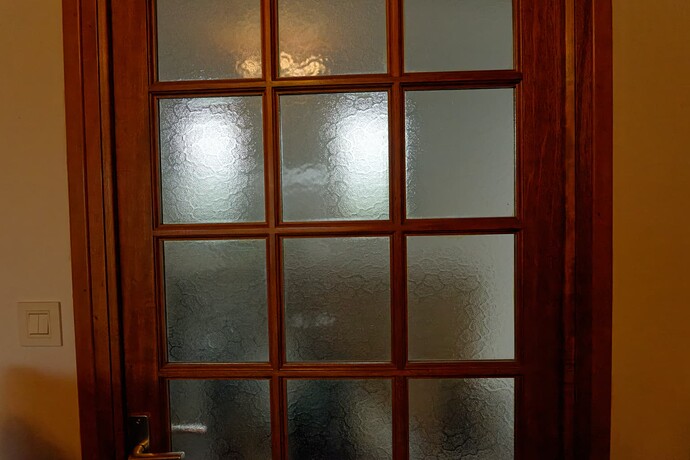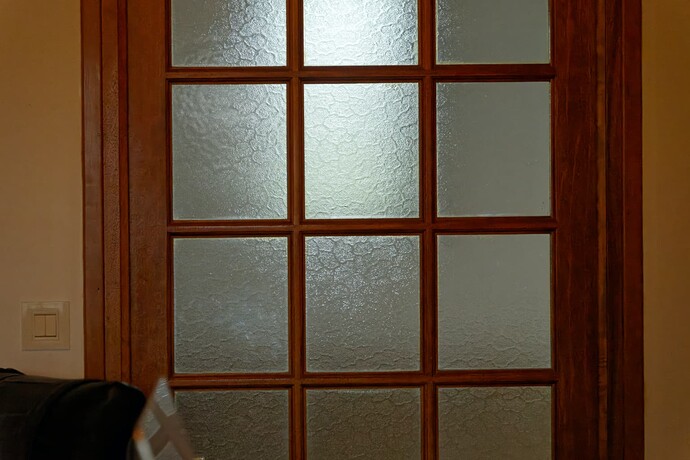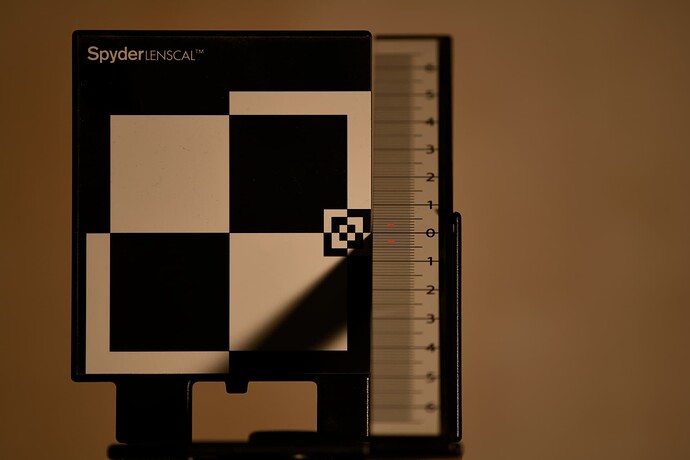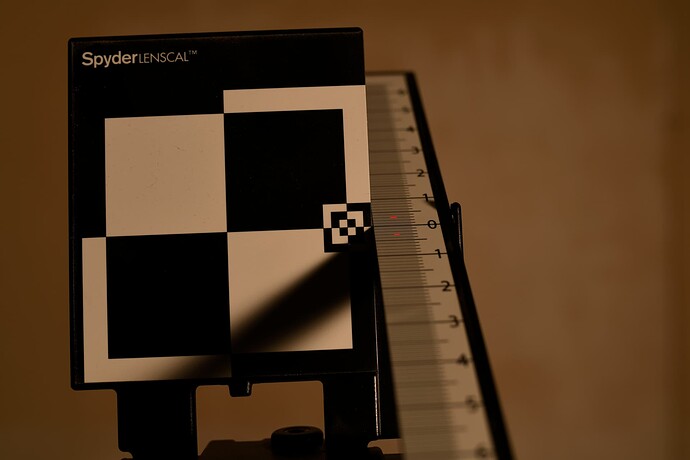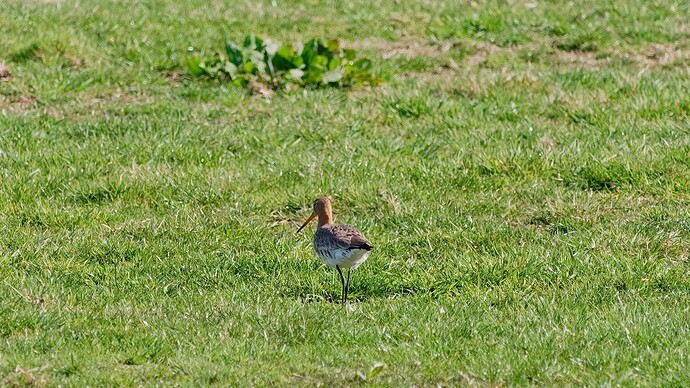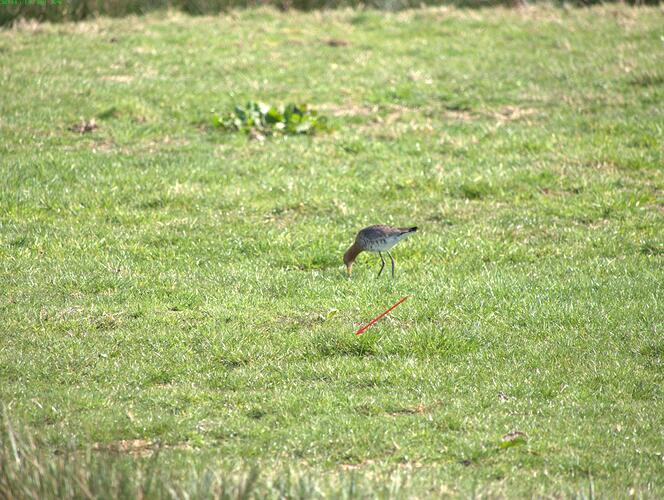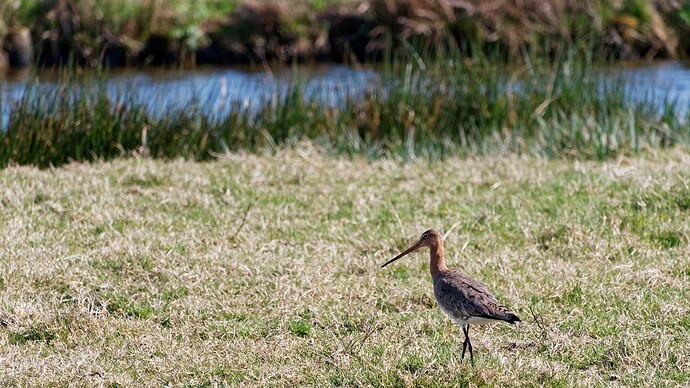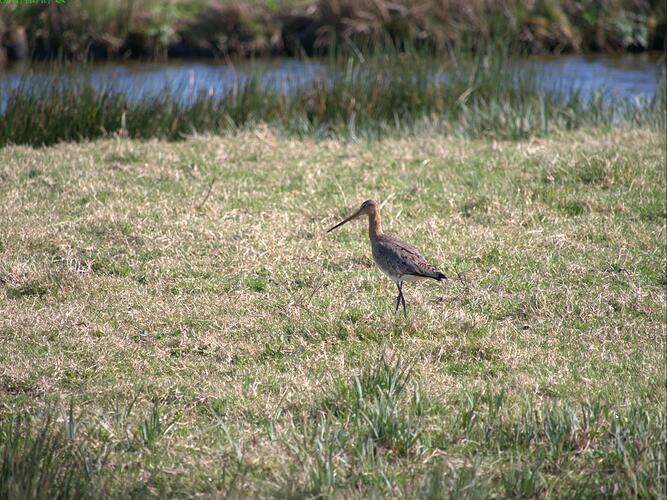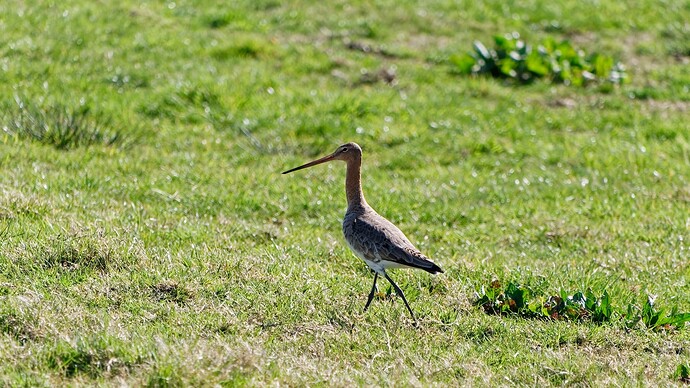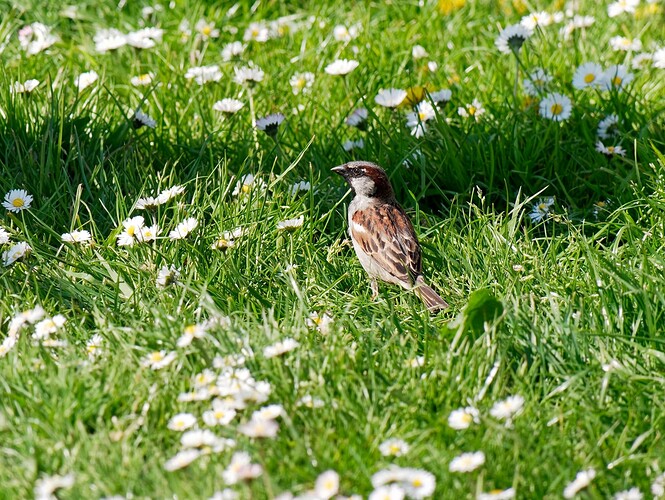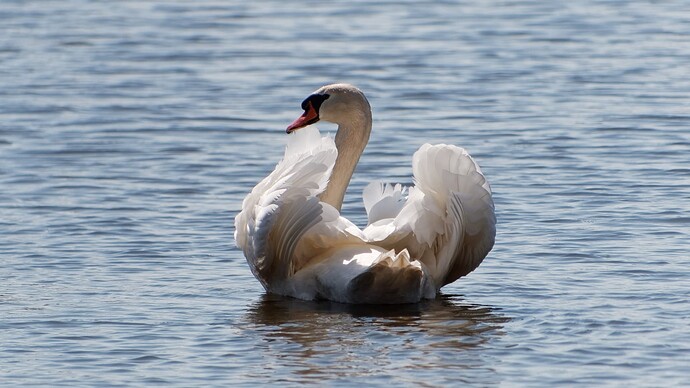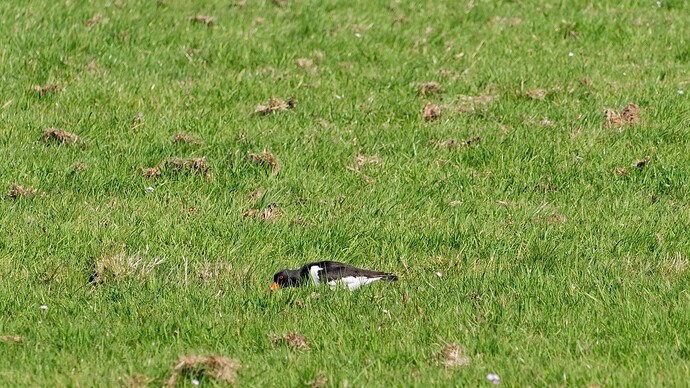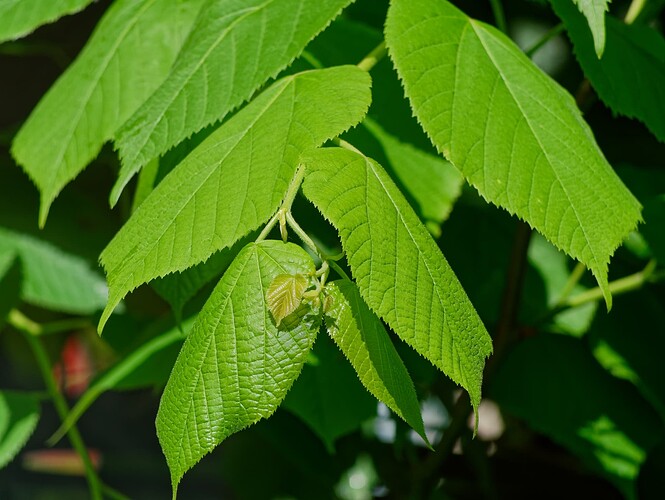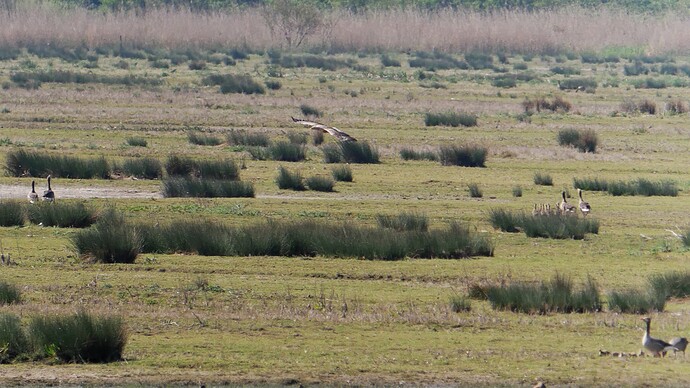As long as both pictures are taken with the same angle, it doesn’t matter. But your’s were not ![]()
I think you will find that those other considerations may be where the problems arise. If you are using back button focusing, the way it was described in the video, the camera is always in continuous focus mode from when you press the back button until you release the back button.
Another difference is that with BBF, your focus is locked when you release the button, but if you use the shutter release for focus, the camera will focus when you press the shutter release a little, depending on whether you selected single or continuous focus.
I now get around that sometimes by continuing to hold the back button in, and release the shutter at what I hope is the proper moment. In that case, the camera is always in continuous focus mode, regardless of whether you use the BBS or the shutter release.
When you use the camera the way you used to, were you in single or continuous focus mode?
I know nothing about the “other” focus modes you listed: (spot/9/25/72/153/3D/Group/etc).
Unless the depth of field marks on my lenses are printed incorrectly, as the distance to the subject increases, the “focus area” beyond the point of focus grows more and more larger than the distance in front of the focus point. As your top diagram shows, at some point (hyperlocal distance) the second number reaches “infinity”.
I don’t see any point in thinking “1/2-1/2” or “1/3-2/3”, as the second number of the number pair will increase faster than the first number - until it reaches “infinity”. I just know more of the image beyond the focus point will appear in focus, than things closer than the focus point.
I use BBF for two scenarios:
- Focus on the subject then release BBF, reframe and take the photo.
- When taking panoramas I focus once with BBF then release and take all frames of the panorama with the same focus.
It takes a bit of getting used to using BBF but you will find it can be pretty useful and specially when tracking moving subjects like birds.
I suppose it is nikon seing those terms.
For fast fast action shooting I always use BBF, continuous focus and burst mode. I begin with spot. This will give me best results if it works in the situation I am. If it does not I enlarge to 9 or group. I rarely go up to 25. Never tested 3D for shoot I do (generaly bird in flight when it comes to fast action shooting).
And this is with dslr, not the last Z9 that changes the rules.
For static shoot : BBF, central AF point (the more precise) and recompose.
And because even best dslr auto focus sytems aren’t consistent and does not give the exact same result everytime (as opposed to best mirrorless AF systems), I shoot little bursts (about 3 to 5 images) If I think I need very tack sharp image or more precisely razor sharp image.
The “pitch” that was the word i am looking for.
The “travelingdistance” per group of 10 vertical pixels gets more on longer focallenghts.
Because you enlarge a area the background and foreground has more distance in the shot by horizontal pitch. The DoF is spread over the same area but that fare way that it looks smaller.
Like a picknickrug standing next to it it’s big, 20 meters away and it looks like a towel.
I set up my D750 as described in this video:
Nikon D750 Setup
I set this up once, and have never changed it. The camera is set for single point focusing, in the middle of the frame, and as long as I press the back button, the camera focuses. When I release the button, the focus locks in place. Eventually I got my second D750 set up the same way - meaning I never use all the other focus modes that Nikon provides.
So yes, I sometimes use the back button focus as you described, but if the subject is moving, I hold in the button continuously, and keep my camera pointed at the subject. The video describes this better than what I’m writing here. (The video has a LOT of wonderful ideas on how to make my D750 more useful - it’s worth watching the whole video.). …but I don’t do video on my D750, so I’m not sure how those ideas work out.
Something else - I bought a “red dot sight for cameras”. I haven’t used it yet, but just like with bullseye guns, once you set it up right, there is a bright red dot in the field of view of this sight. My plan is to follow birds in flight with this red dot, while holding in the back button, and maybe I’ll get more in-focus bird photos. (red dot camera sight ) When I get to visit my brother’s home, or the zoo, or the everglades, I’ll get to try it out.
OK. The challenge is on! You just forced me to setup a test ![]()
28mm
150mm
There is nothing visually obvious in the difference in DoF between the two focal lengths, except the outer windows behind the blurred glass door, but I input the focus distances into TrueDoF-Pro…
| Focal Length | Aperture | Focus Distance | DoF |
| :-: | :-: | :-: | :-: | :-: |
| 28mm | f/5.6 | 1.08m | 0.487 |
| 150mm | f/5.6 | 4.95m | 0.337 |
I think that the “arguments” arise because, at short focus distances, there is very little difference but, at longer distances, they become more apparent.
@Joanna , @mikemyers
Try those.
Not easy to get the exact same size anyway, neither parallell focal plane to target. Did it quickly. So not perfect.
300mm vs 35 mm f4 both.
But anyway. Just imagine 0 is the eye of your character. Did you really changed dof with 300 instead of 35 ?
What does your eyes say you ? look at both 6, then 5, then 4, then 3, then 2, then 1, then 0 …
No.
Your picture @Joanna clearly shows a difference between the width of the doors. The one at 28 mm is less wide than the one at 150 mm. Meaning you were too close with 150 mm. I guess, you just didn’t want to break the wall before dinner to get more distance?
And when I calculate the magnification, your distances deliver not the same illustration scale:
28 mm 1:36.54
150 mm 1:30.97
If I take the magnification of the 150 mm @ 4.95 m and try to get roughly 1:31 for the 28 mm, the distance would be 0.9 m. 18 cm closer do make a difference.
With this DoF calculator the DoF of 28mm f/5.6 @ 0.9 m would be 0.35 m
And for 150 mm f/5.6 @ 4.95 m : 0.36 m
I think, @JoPoV is correct.
It is just very uncommon to think this way around - we take a wide angle lens because we sometimes can’t break walls or trees or buildings just to get enough distance to be able to use 150 mm. And we usually don’t take two pictures witn different lenses, but on the very same optical axis at two different distances just to check which DoF is - equal.
I’m going to stay mostly out of this, but I disagree that I only use wide angle lenses for that reason. I also use them when I want to “expand space”, and I use narrower lenses to "compress space, and sometimes I deliberately want more or less depth of field.
If I take a photo while I’m standing in a room, with my wide angle lens, since people will view photos at the same distance, the room “looks” deeper, and if I use a normal lens, the room looks more like what people actually see. I can use a telephoto lens to make the room appear shorter.
To prove this, take a photo of a person several feet in front of a tree, with a wide angle lens, a normal lens, and a telephoto, trying to keep the person roughly the same size in all three images. The tree will seem to be at three very different distances from the person if the three photos are viewed at the same size and the same distance from the viewer’s eye. I dunno how man others use this technique, but I often do so, especially when I’m using a zoom lens.
But especially in this thread, I need to be careful as to what aperture I use, especially if I want the people and tree to appear equally sharp. Usually, I want the background, the tree, to be less sharp. As a matter of face, I have my Fuji X100f around my neck, with the built-in neutral density filter turned on, so I can repeat my photo of the tree with the boats in the background, but with all the background stuff looking blurry. I hope to post this image later today.
I am not very good in calculating things like viewing angle and DoF size.
I use my photographers companion app in order to get some idea what’s happening.
Or just test something.
Somewhere in the back of my mind there is a ringtone.
We know:
1 the smaller the fnumber the bigger the aperturehole the smaller the DoF around the focussingpoint.
2 the replace of the focuspoint in the field of view shifts the DoF. Even if the perspective doesn’t change, lens angle and camera doesn’t move.
3 focallength of the lens does make the DoF smaller when the focallenght increases wile aperture stay’s the same.
Most of this is old news for most of us. We just adjust wile framing a subject or take a smaller aperture to overcome decrease of DoF in longer aperture.
Every one knows in m43 world a 100-300mm zoomlens works best between f7.1-f9
F6.2 and f11 bit less but id you need it you need it. This is the workarea with best posible sharpness and workable DoF. Wile a prime as pl15mm f1.7 on 10m afpoint a hyperfocal is around 8m and closes point is around 5m.
To get that in 100mm you need a staggering f72,0! Remember factor 2 for FF.
Al this is visual quite easy to grasp.
Now we have manual zoom by feet and the same framing. I don’t say angle of view because that’s imposible. As i recal correctly.
You can’t get the same angle of view of a 300mm with a 15mm just by walking the distance. I think. I mean it sounds not possible.
I think it’s comparable NOT equal.
But i would like to investigate. I think most of us where aware of this Phenomenon subconscious and adapted to that but not really using it.
Just look at my post before that could be consider as a field test and not as a theorical thing.
On second and third thought:
This is only one part of the equation, if you exclude the other parts distance and magnification, your statement is questionable (or just wrong). You just take it for granted to stay on the same spot (=distance) when changing the lens.
Yes, if one wants to take the same picture and then it’s only the main subject and the DoF around it. But for what purpose? ![]() And it still won’t be the same picture anyway, so why bother about DoF? The wide angle picture, even at f/1.4 would just show a lot more environmental elements if you use a distance to show the portrait head in the very same magnification like the one with the portrait lens.
And it still won’t be the same picture anyway, so why bother about DoF? The wide angle picture, even at f/1.4 would just show a lot more environmental elements if you use a distance to show the portrait head in the very same magnification like the one with the portrait lens.
When talking about size of frame in motion picture (could be the same in portrait photography, or in packshot photography, or … anyway), you have 2 ways to name those size:
1 - relative to set
2 - relative to character.
When a director of photography has to do for instance a close up of a character, he has to know that if he wants to change dof, changing lens won’t change anything (as some tend to think here). Only changing aperture matters.
He has to know too that if he wants to change perspective but not dof, he only has to change lens and camera distance to subject but not aperture.
Yes maybe not of a big use for landscape photographers. Maybe …
But when only thinking to your photography in term of composition, It does have a lot of sense.
Well that’s what you do with a zoomlens. Standing still and frame with the turn of the zoomring. Lazy i know ![]()
Most zoomlenzes has one other thing and are wide open often not constant.
Which cloak the decreasing dof wile zooming out.
(mea culpa about my ingorance in the prime department of walking to frame the same with different. Focallenghts. I only have one prime. 15mm)
So @JoPoV pointed me to something new, which i never encountered because of my use of zoomlenses and seldom use primes other then wa 15mm.
Magnification, yes that would be the factor. ![]() cropping isn’t the same as optical magnification in field of view.
cropping isn’t the same as optical magnification in field of view.
@JoPoV
Yes, and what i also see is that the ground coverage(cm on the ruler) in 1 cm vertical on the (pixelcount) image on the 300mm is much larger.
So the “angle” how the DoF plane is layed over the subject(ruler) is steaper on the 35mm then on the ruler of the 300mm . Angle of view even when the pitch is horizontal. So if i place a vertical plane in a 45 degree angle from the focal plane, would it be exacly the same at 35mm and 100mm? Or use two puppets behind each other just in focus.
My 35-100mm f2.8 would be a great lens to explore your statement which i acknkowledge now. ![]()
This is something consumer (general hobby) photographers seldom do. ![]()
Atleast i never bin seen doing this. I just take the picture.
So i never bumped in to that.
generally everything is planned before beginning to work on stage. So no need to change at this moment. Usefull when planning most of the time. But if problem, better to know how to react fast.
And better to the assistant to rent needed lens relative to what filmmaker wants before been on stage.
And I would add : why to know how things work when you only have to push a button ? ![]()
I just don’t understand. If somebody wants to know how the dof develops just look at my diagrams. All the answers are in it, nearly all.
George
Sorry George i not a guy who can read those easily. 
i don’t have a “licence to shoot” didn’t take photographic classes.
Just aim and shoot bumped in a problem, read about it, watch youtube, ask around, try again kind of sequence.
example(in general not specific to you)
first shots with my new 100-300mm, aim most of them far way small objects max zoom horizonal pitch.
(most m43 lenses are quite sharp wide open so a f6.3 should be enough i thought.(f4-5.6 across 100-300mm.)
just max out and thus not most sharp but hence you have 300mm use it!
don’t know the distance, i would say 30-50meters or so? (600mmefl)
processing this at home then and only then you see the narrow wiggleroom you have.
it’s a large “vignetting” of blur. in every way a “bad” image.
aimed at its but, blown highlights.
but on a small lcd it looks nice at that time.
god even worse focussed on the grass poll.
(at shorter focal length well its nearly visible here its a needle in your eye.)
after some shots:
cropped out the fussyness in front:
Still you see the “problem” (at home) didn’t had the app yet.
so continue at f6.3
started to “nail” focuspoint better but still wide open because long distance means high shutterspeed possible.
at home reading why:
and improvement: f8
(5meter away sittingdown.)
tried to isolate subject.
wide open on purpose:
f7.1 just in the best sharpnes it can give say some experts.
and just before i placed my bike back in garden:
meaning of this list of images?
theory is great it gives answers to things we stumble on and i am the first to admit i am a novice home learned photographer. Every time i think i know the answer some points me to be wrong. Which is great! because that’s the only way to learn. (thanks for that @JoPoV ) but lets not forget it’s mostly fun to make images for lots of us. somethimes you go out forget 50% about where and what to do when. Just enjoy the day and and home it can be two things: lucky shots in great images for home use or dammn ignorant a-hole you forget this or that.
So what i mostly do is take some f7.1 and a f8 and a f9 and a brighter and less bright.(as long as the subject will stand my presents aiming that “gun” at him/her and at home i see/pick the one which would be the one i would take in one go if i knew in front what i was getting. learning by doing.
Still as techy i like to debate about why things happen as they happen.
Studio shooters would be much more prepared and do much more homework before they take the shot.
stuff like those spyder lenscal thing great to investigate or proof things.
my kind of testing is impulsive and amaturistic.still fun.
i hope we all can see the joy in playing and debating about shooting images and techniques.
And don’t be afraid to be wrong or admit to be wrong wile learning.

ok last one:
when you know you need more:
EZ1.4 and 300mm gets you 851mm EFL:
and still not enough! damnn.
need a pl100-400mm
 (don’t tell my wife)
(don’t tell my wife)
Muuaaahaha. Never heard that, almost fell of my chair.
![]()
